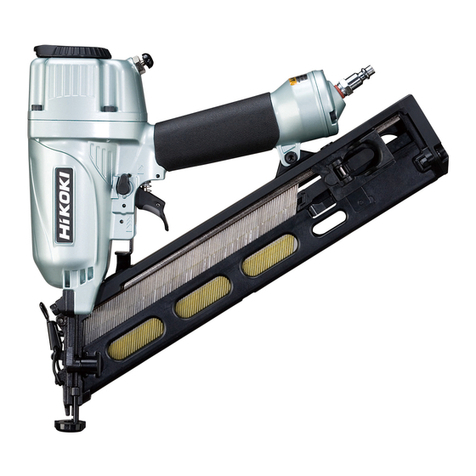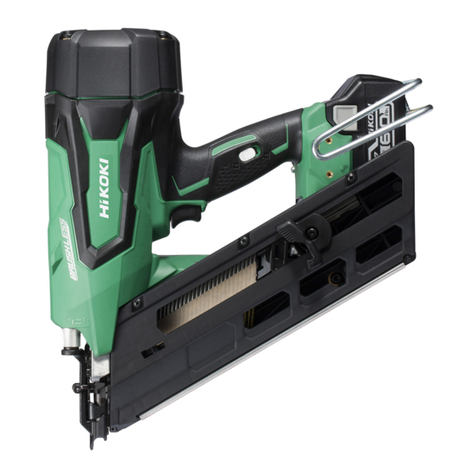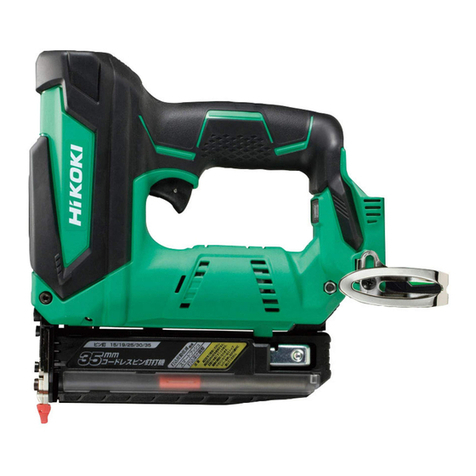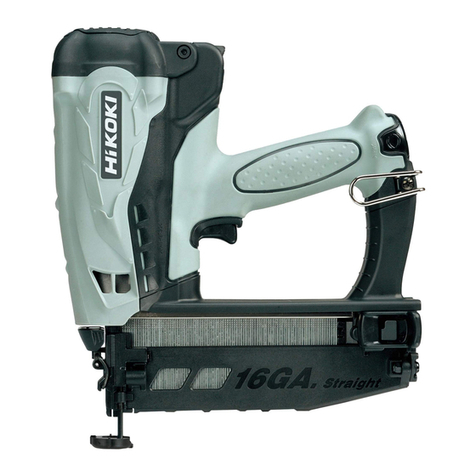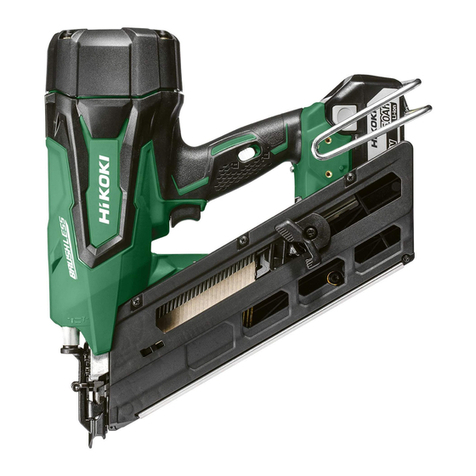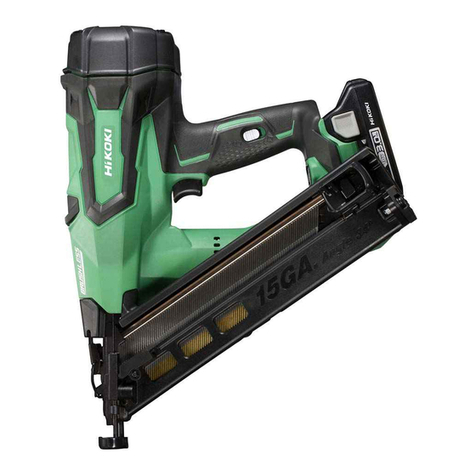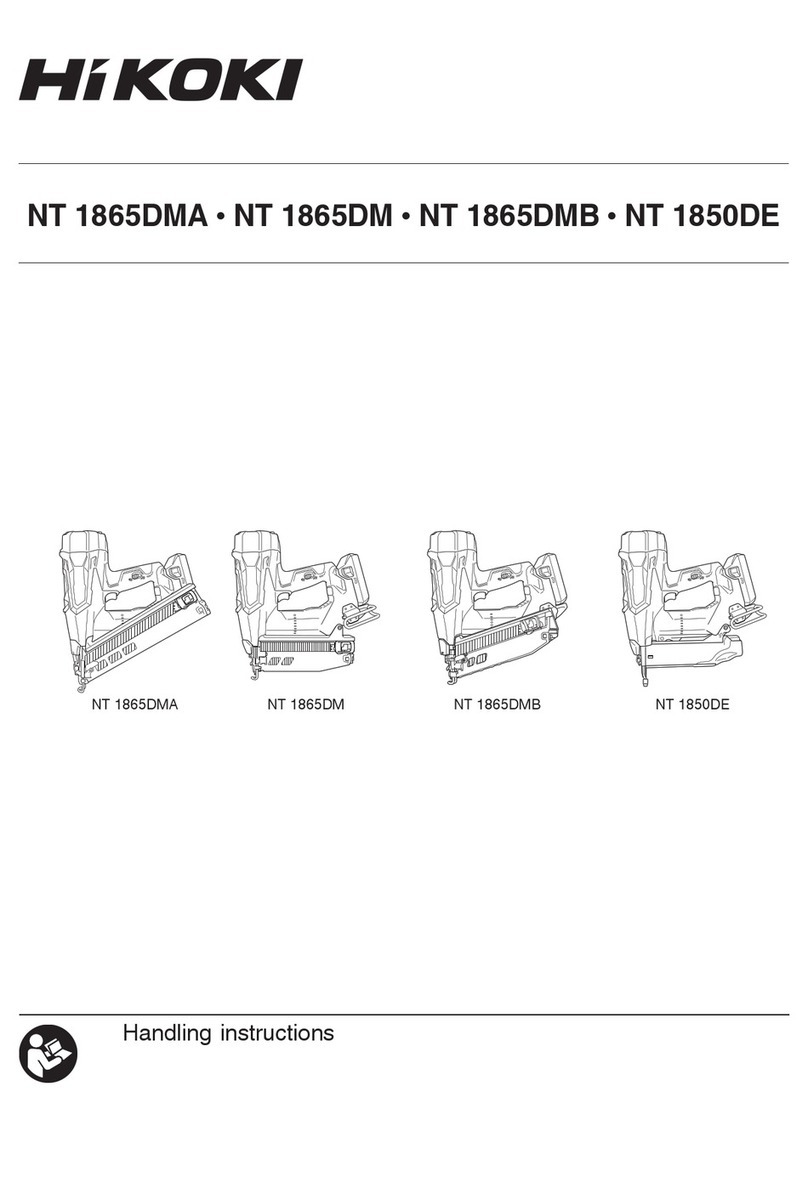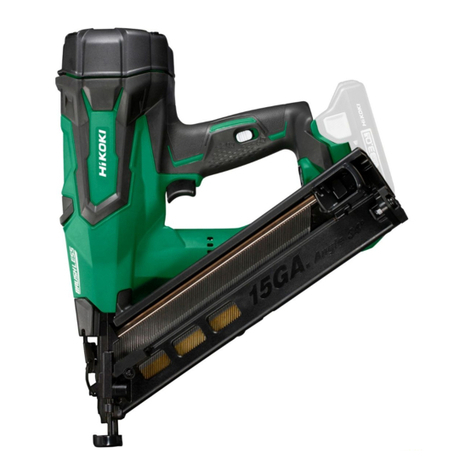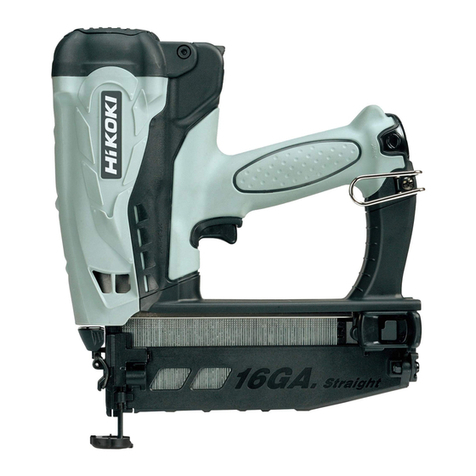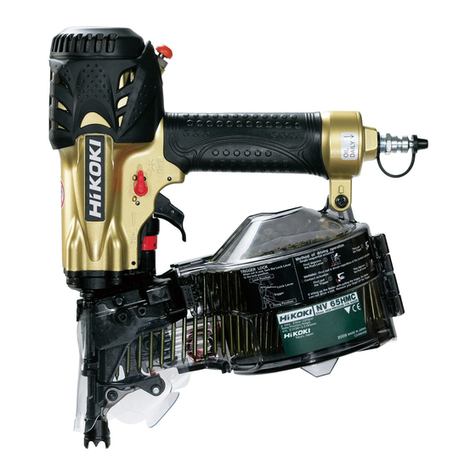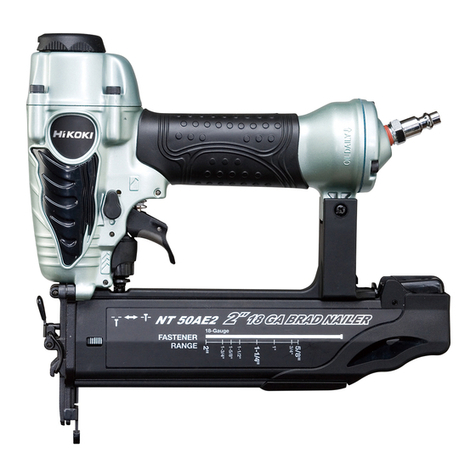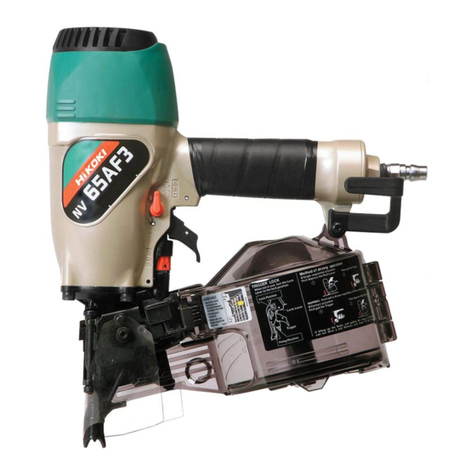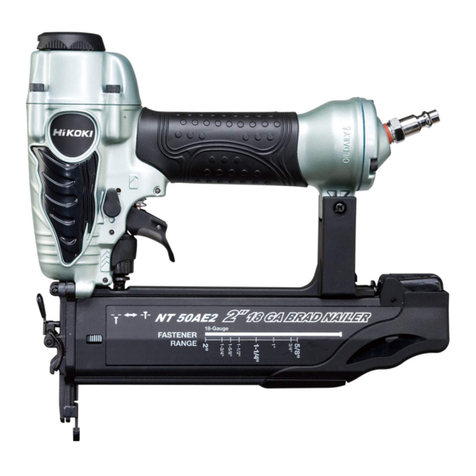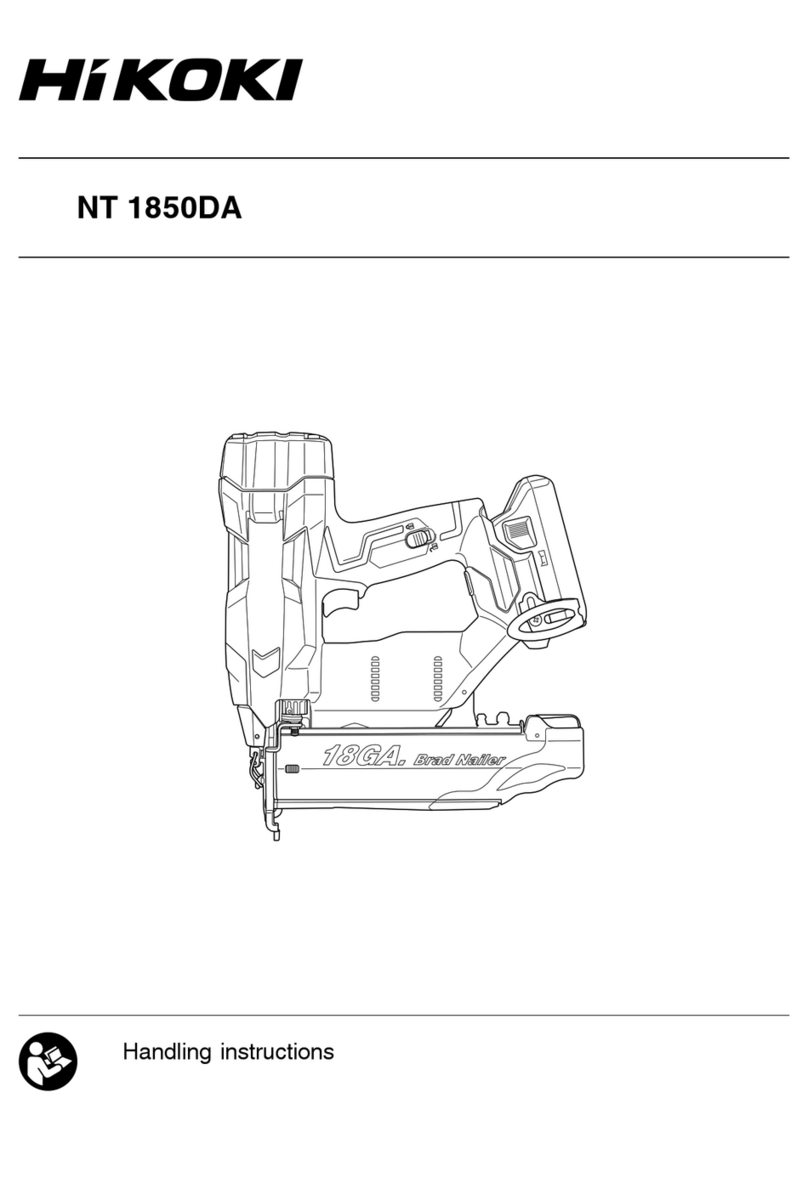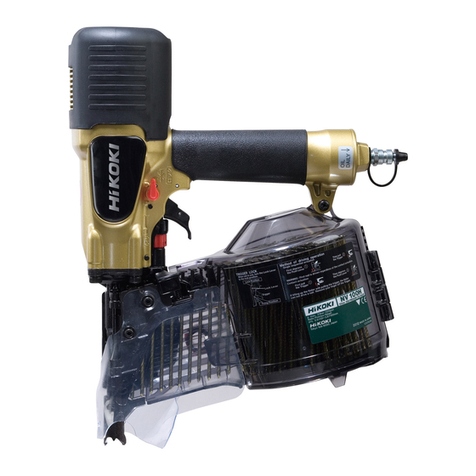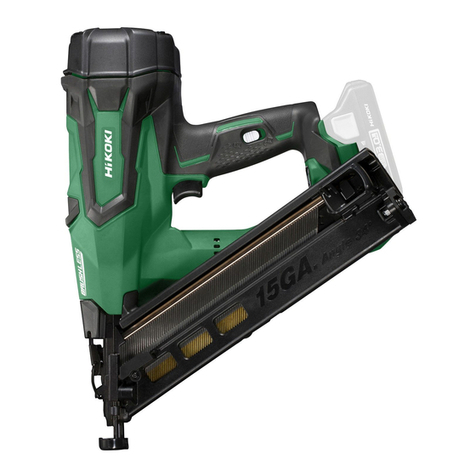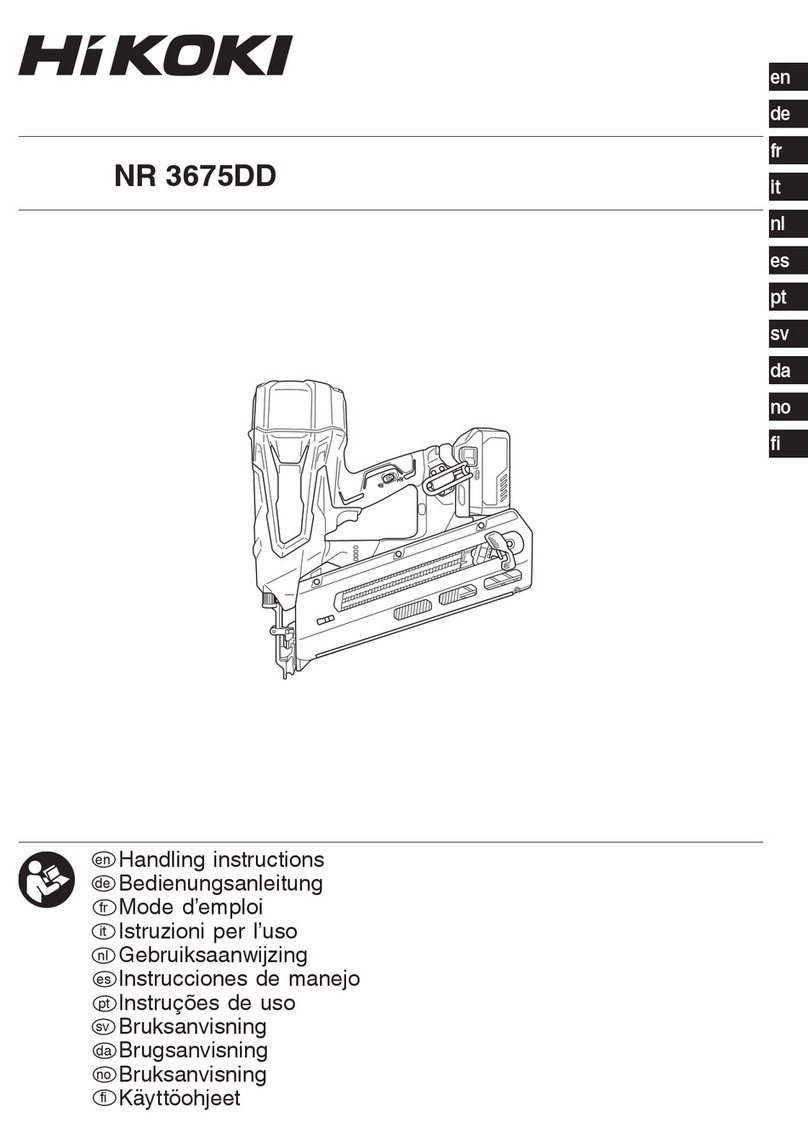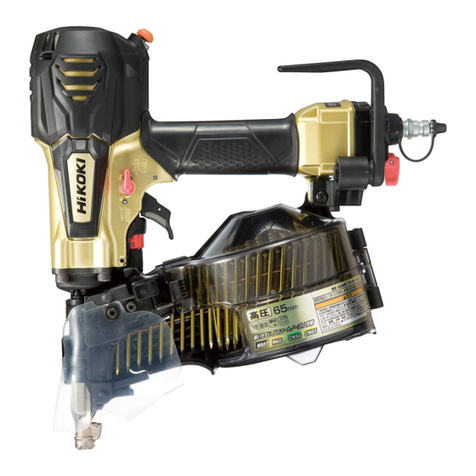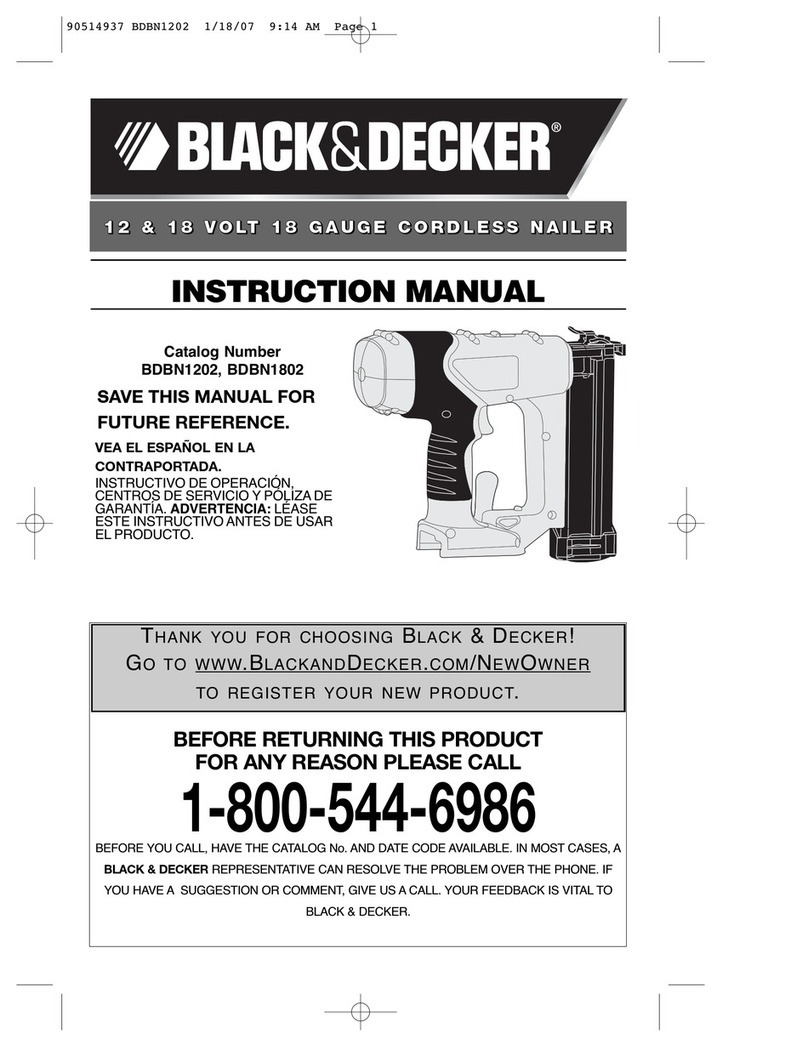
5
English
GENERAL OPERATIONAL PRECAUTIONS
1. Operate the power tool safely for correct uses.
Do not use the power tool for uses other than those
specified in this instructions.
2. For safe operation handle the power tool correctly.
Please follow the instructions given in this instruction
manual and correctly handle this tool so as to ensure
safe operation. Never let the tool be use by children or
people who do not know enough to be able to handle it
correctly, or let it be used by people who cannot operate
it correctly.
3. Confirm the safety of the workshop.
Keep unauthorized people away from the workshop.
Especially children should be kept away.
4. The right parts in the right places.
Do not remove any of the covers or screws. Keep them
in place as they have their functions.
Moreover, because it would be dangerous, never
make modifications to the tool or use it after making
modifications.
5. Check the tool before using it.
Before using the tool, always check that no parts of it
are broken, that all screws are completely tight, and that
no parts are missing or rusty.
6. Excessive work could cause accidents.
Do not make tools and accessories work beyond their
abilities. Excessive work not only damages the power
tool but also is dangerous in itself.
7. Stop operation immediately if abnormalities are
noticed.
Stop operation if you notice abnormalities, or if the
power tool does not work properly; have the power tool
inspected and serviced.
8. Look after the power tool carefully.
If you drop or knock the power tool against things, the
outer frame may be deformed and cracks or other kinds
of damage may occur, so please handle it with sufficient
care. Also, do not scratch or engrave signs on the power
tool. Owing to high pressure air inside the tool, cracks in
the surface are dangerous.
Never use the power tool if a crack develops or if air is
escaping from a crack.
9. Take good care for a long life.
Always take good care of the power tool and keep it
clean.
10. Inspection at regular intervals is essential for
safety.
Inspect the power tool at regular intervals so that the
power tool can be operated safety and efficiently at all
times.
11. Consult an authorized service agent if repair or
parts replacement is necessary.
Ensure that the power tool is serviced by authorized
service agent only, and that only genuine replacement
parts are used.
12. Keep the power tool in a proper place.
When not in use, the power tool should be kept in a dry
place out of the reach of children. Put into the body 5-10
drops oil through the hose joint to protect the tool from
rust.
PRECAUTIONS ON USING NAILER
1. Safe operation through correct usage.
This tool was designed for driving nails into wood and
similar materials. Use it for its intended purpose only.
2. Make sure air pressure is within the rated range of
air pressure.
Fastener driving tools operated by compressed air shall
only be connected to compressed air lines where the
maximum allowable pressure cannot be exceeded by
a factor of more than 10% which can for example be
achieved by a pressure reduction valve which includes
a downstream safety valve.
(For model NR90AE(S1), 110% of rated maximum
allowable pressure is 0.91 MPa = 9.1 bar)
Fastener driving tools operated by compressed air
should only be operated at the lowest pressure required
for the work process at hand, in order to prevent
unnecessarily high noise levels, increased wear and
resulting failures.
3. Never operate the equipment with high-pressure
gases other than compressed air.
Never use carbon dioxide, oxygen or another gas from
pressurized containers under any circumstances.
4. Be careful of ignition and explosions.
Since sparks may fly during nailing, it is dangerous
to use this tool near lacquer, paint, benzine, thinner,
gasoline, gas, adhesives and similar inflammable
substances as they may ignite or explode. Under no
circumstances should this tool therefore be used in the
vicinity of such inflammable material.
5. Always wear eye protection (protective goggles).
When operating the power tool, always wear eye
protection, and ensure that surrounding people wear
eye protection too.
The possibility of fragments of the nails that were not
properly hit entering the eye is a threat to sight. Eye
protection can be bought at any hardware store. Always
wear eye protection while operating this tool. Use either
eye protection or a wide vision mask over prescription
glasses.
Employers should always enforce the use of eye
protection equipment.
6. Protect your ears and head.
When engaged in nailing work please wear ear mufflers
and head protection. Also, depending on condition,
ensure that surrounding people also wear ear mufflers
and head protection.
7. Pay attention to those working close to you.
It would be very dangerous if nails that were not properly
driven in should hit other people. Therefore, always pay
attention to the safety of the people around you when
using this tool. Always make sure that nobody’s body,
hands or feet are close to the nail outlet.
8. Never point the nail outlet towards people.
Always assume the tool contains fasteners.
If the nail outlet is pointed towards people, serious
accidents may be caused if you mistakenly discharge
the tool. When connecting and disconnecting the
hose, during nail loading or similar operations, be
sure the nail outlet is not pointed towards anyone
(including yourself). Even when no nails are loaded at
all, it is dangerous to discharge the tool while pointing
it at someone, so never attempt to do so. No horseplay.
Respect the tool as a working implement.
0000BookNR90AE(S1).indb50000BookNR90AE(S1).indb5 2020/05/2010:46:292020/05/2010:46:29

